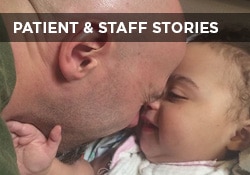This website uses cookies so that we can provide you with the best user experience possible. Cookie information is stored in your browser and performs functions such as recognising you when you return to our website and helping our team to understand which sections of the website you find most interesting and useful.

Susan E. Mazer, Ph.D. Blog
Thoughts and ideas on healthcare
Hi, and welcome to my blog! I'm Susan E. Mazer -- a knowledge expert and thought leader on how the environment of care impacts the patient experience. Topics I write about include safety, satisfaction, hospital noise, nursing, care at the bedside, and much more.
Encore Post: 5 Ways to Improve the Hospital Waiting Room Experience
January 22, 2016
 No new post this week, but enjoy the encore post — one of my most-read in 2015!
No new post this week, but enjoy the encore post — one of my most-read in 2015!
Waiting is not good in the American culture. If we were Buddhists, we might look at the wait and experience it as requisite to enlightenment.
However, most of us consider even the relatively short wait at a stop sign, too long. And, no, we do not feel particularly enlightened.
And, this attitude is not good for our health, mood, and relationships.
At many hospitals, the waiting room experience is not particularly pleasant. The rooms are generic and tend to represent holding pens rather than an example of patient caring.
Most often, waiting rooms are set up like Greyhound Bus stations: chairs in line, magazines so out of date that they beg for the recycle bin, staff ignoring us, televisions turned to channels totally irrelevant to why we are there at all. Sound familiar?
Now, for a regular physical, our discomfort could be seen as normal impatience. However, what about Surgical waiting, ICU waiting, Endoscopy/Colonoscopy waiting? Labor and Delivery waiting? Whew! They are not all the same.
So, here are five ideas to consider and/or suggest to your waiting room manager, if you have such a person:
- Make the waiting time part of the treatment. Give the gift of relaxation, nature, music, calmness, concern.
- Provide opportunities to think and write down (on computer or note paper) what questions need to be asked when you finally are called to the front of the line.
- Provide water, coffee, tea, popsicles, popcorn, cookies, fruit — hunger makes us all irritable.
- Make the room itself warm and cozy. Look at the clutter from others and remove it. Straighten up the chairs and clear the debris.
- Test out your new waiting area by sitting in it for one hour. How does it feel? How are those sitting there for real doing?
The bottom line: Are the people who are waiting better or worse off for the experience?
P.S. If you like this post, please do me a favor and share on LinkedIn, Twitter, Facebook, etc. Also to get automatic notices when a new post is published, subscribe (upper right). No spam – just great content. Thanks!










